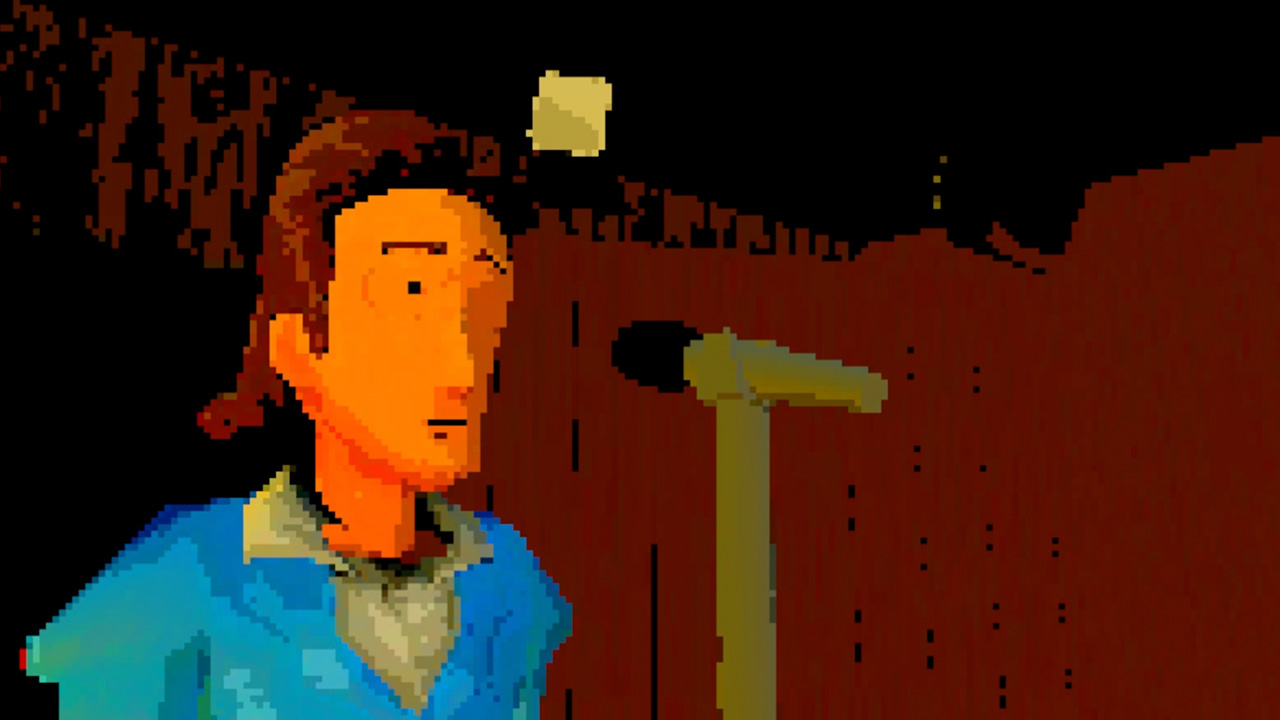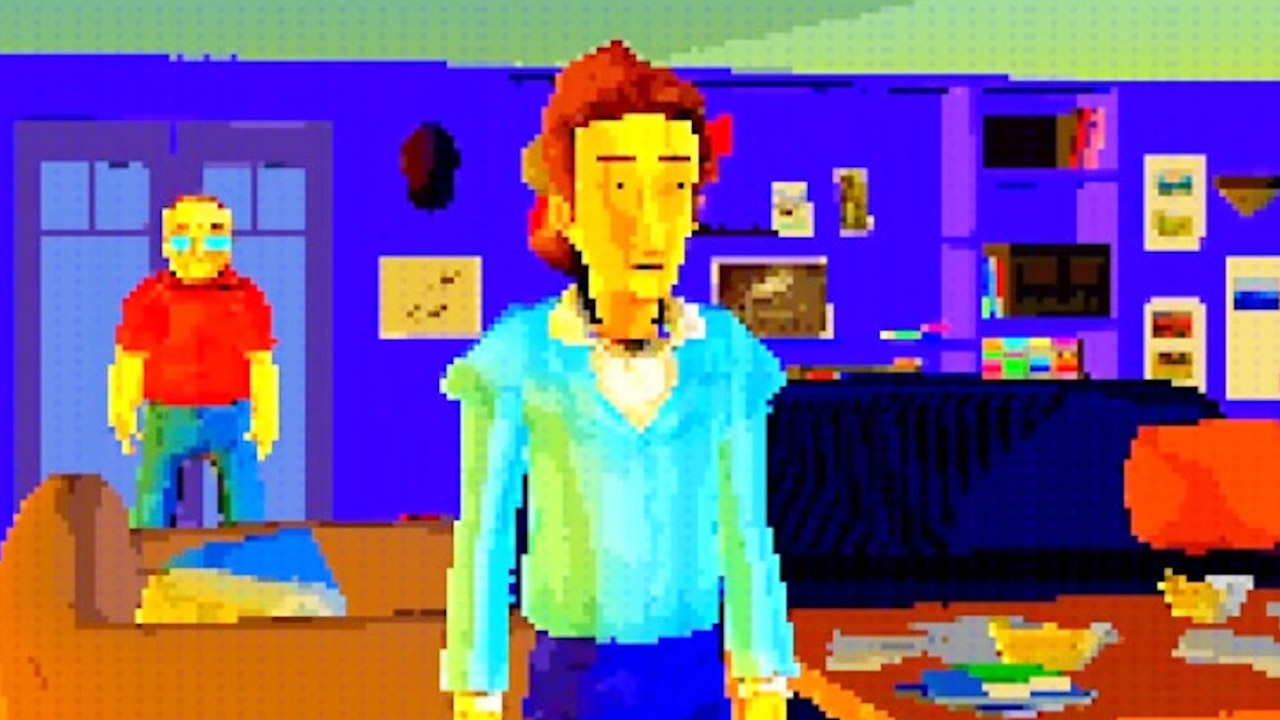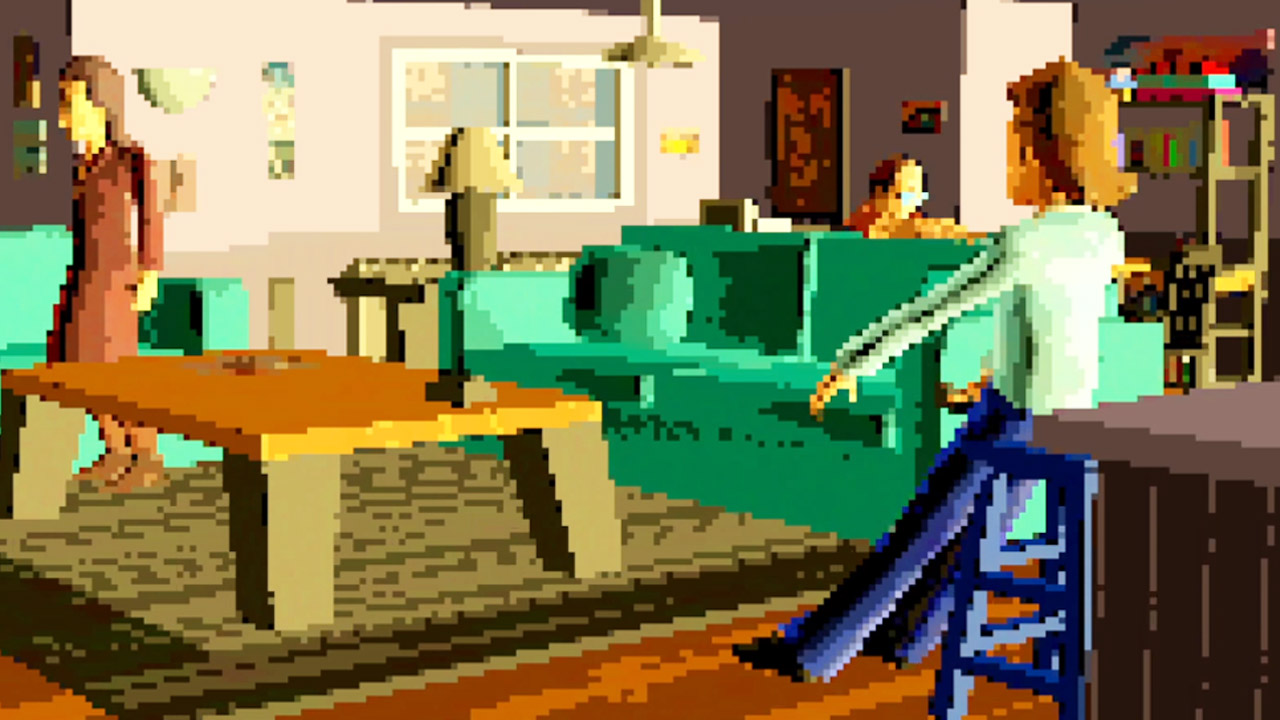Seinfeld AI parody Nothing, Forever destroys the sitcom — not that there’s anything wrong with that

The idea of never-ending, AI-generated Seinfeld is gold, Jerry! Gold!!! Mega-fan Luke Buckmaster believes the uncanny comedy of experimental stream Nothing, Forever may have much more exciting developments in its future.
An AI-generated parody Seinfeld series launches, a yada yada, the entertainment industry is never the same. In the Seinfeld episode The Bizarro Jerry, Elaine hangs out with Kevin, Gene and Feldman, who become known as her “Bizarro friends”—having a similar dynamic to Jerry, George and Kramer in some respects but wildly different in others. Now, Kevin et al have been spectacularly out-bizarroed by four Seinfeld-inspired characters—Larry (inspired by Jerry), Fred (George), Yvonne (Elaine) and Kakler (Kramer)—from Nothing, Forever, a Twitch channel that takes the idea of a “show about nothing” to extremes, stretching it into infinity.
The experience uses OpenAI’s GPT-3 to give its virtual cast an on-the-fly, never-ending stream of dialogue, touching on Seinfeldian subjects such as cafes, restaurants, comedy clubs and etiquette. Nobody—including its creators, Skylar Hartle and Brian Habersberger—knows what their pixelated characters, which resemble Sierra video games from the 90s, will say next. This gives the production an unpredictable quality unlike almost anything else. This week Hartle and Habersberger were reminded of the dangers of having no-one at the wheel when the AI spat out jokes deemed to be transphobic by Twitch, resulting in the channel being temporarily banned. Better stick to those airplane peanuts puns, Larry!

Part of the show’s humour, at this embryonic point in its evolution, comes from the AI being rather scrappy. Visually it’s buggy: the characters are often not looking at each other and float into the couch and kitchen bench. Dialogue-wise, conversations often end abruptly and are strange, sometimes nonsensical. The show periodically returns to Larry performing stand up—like early Seinfeld seasons—but many of his bits aren’t jokes at all, let alone funny. Sometimes the extensively used laugh track misses the punchline, chasing it with an awkward silence. Or—more amusingly—it follows an unfunny line (like “hey everybody, thanks for coming out tonight!”) with uproarious laughter.
One could endlessly nitpick, or highlight moments that are actually decent. One day when I watched (I’ve chalked up about two hours of intermittent viewing) the characters embarked on a long chat about a nearby bank that started serving coffee and food to people waiting in line, as a way of luring new customers. This conversation felt genuinely Seinfeldian and concluded with Larry remarking “they should open a spa next!”—which is a pretty good joke to end on. Quirky clips have made the rounds, such as as a scene which, some joked, suggest the show is becoming self-aware, during an exchange that begins with Yvonne asking: “Did you ever stop and think this might be one big cosmic joke?”
The big question tinkering at the edges of all this is: where’s it heading? To observe that we’re moving towards an era of entirely virtualized sets and actors now feels almost passé. In June last year I speculated that Tom Cruise might represent the last generation of flesh and blood movie stars, incorporating Marlon Brando’s prophetic prediction that “actors aren’t going to be real, they’re going to be inside a computer.” I don’t know if Brando contemplated the outsourcing of other professions also—from writers to directors, editors, cinematographers, and, well, everyone. In a recent interview with Polygon, Hartle gave a compelling description of what—not who—she believes is directing Nothing, Forever, explaining that:
“In addition to the third party services we’ve used, we have a lot of proprietary generative algorithms that cause the show to be ‘formed’, so to speak. We collectively call this logic the ‘director,’ as it is largely responsible for making sure all the individual pieces come together into a whole.”
The idea that humans are no longer in control of art—no longer the sole authors of the work—takes some getting used to. However the viral success of Nothing, Forever and the enthusiasm surrounding the recent launch of AI image generators such as DALL-E and Midjourney suggest this won’t be a terribly hard pill for the public to stomach. Especially not if it results in amazing experiences. Various, currently available AI tools can convert text strings into video, virtualizing the entire production process. Instructions such as “slow shot, mid height, moving down a hallway” render the desired footage; there’s no need for a camera or a set. Such initiatives potentially remove traditional barriers, liberating content creators with hitherto unimaginable virtual resources.
There’s also the prospect of hardcore fans having more more material than they could ever consume. Hartle told VICE about his vision of future TV shows delivering new content ad infinitum:
“As generative media gets better, we have this notion that at any point, you’re gonna be able to turn on the future equivalent of Netflix and watch a show perpetually, nonstop, as much as you want. You don’t just have seven seasons of a show, you have seven hundred, or infinite seasons of a show that has fresh content whenever you want it. And so that became one of our grounding pillars.”
Hartle’s prediction of never-ending TV shows might turn out to be accurate. However it positions the round peg of mind-bending emerging technologies inside the square hole of comparatively old, heavily codified mediums, i.e television. Emerging technologies become truly exciting when you think outside the box.

In essence Nothing, Forever verbalizes and visualizes a computer talking to itself. Far more interesting is when a computer talks to you and has a conversation in real-time. In 2019, when I wrote for the BBC about what motion pictures might look like in 20 years, immersive artist and VR pioneer Chris Milk told me his prediction that future technology will be capable of “crafting a story in real-time, that is just for you, that uniquely satisfies you and what your likes and dislikes are.”
This could work like the following. You put on your virtual reality headset and input basic instructions. You might say you have an hour to spare; you’re in the mood to be an action hero; you want to experience an inter-galactic adventure; you’d like a romantic subplot. The computer then spits out an on-the-fly experience delivering the goods, incorporating conversations with non-player characters who look and sound just like humans. Milk acknowledged that “the technology doesn’t fully exist yet” for such AI characters, but added: “I don’t think we’re 20 years away from it.”
Indeed. The speed of game-changing technologies such as AI in its many forms is taking even tech heads by surprise. One of the most exciting things about Nothing, Forever is Hartle and Habersberger’s plan to improve it, evolving the experience into something that might look and sound very different in one or five years time—presuming there is still an audience for it. “One of the major factors that we’re thinking about,” he told VICE, “is how do we get people involved in crafting the narrative so it becomes their own.”




















